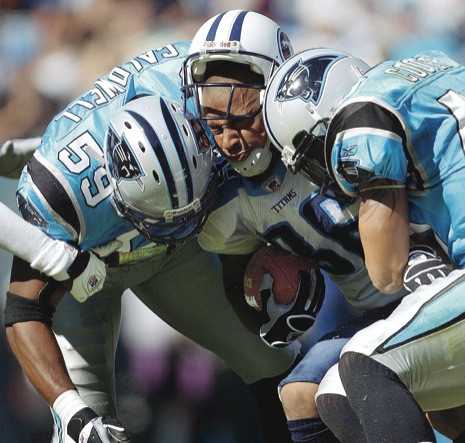The Wrack
The Wrack is the Wells Reserve blog, our collective logbook on the web.
The Wrack is the Wells Reserve blog, our collective logbook on the web.

The following was published in the Biddeford-Saco Journal Tribune and Making It At Home Sunday editions, 2/2/2014.
I will not be the first person to admit that it’s gotten harder to watch football this season. I still love the drama, the personalities, and the heroics of any given NFL Sunday. But some guilt has crept into the game I grew up watching every week with my father. I’m not seeing it the same way I used to.
Ultra-slow-motion replays, mercilessly repeated on our HDTVs, have brought us closer to the gridiron than ever before. Close up, it’s not the prettiest picture. When a running back gets up from a 10-yard-run with a thousand-yard-stare, we now know that the hit that dropped him will last far longer than the next set of downs. We now know that every collision our young gladiators endure for our amusement is a permanent injury. As the hits add up, the players’ bones microscopically fracture, their tendons fray, and their brains slowly scramble.
Since I typically write about the environment and our changing world, on this Super Bowl Sunday let me try to draw a connection between football and weather-related disasters.
NFL players are taller, heavier, and faster than ever before. Offensive linemen entering the league have gained 60 pounds in the past 40 years; looking at the average heights and weights of all the players is like meeting a different species. A deeper talent pool, more advanced training regimens, and, of course, massive doses of steroids are responsible. We also gird our players in lighter, tougher armor, which has had the unintended effect of speeding up the game and making the hits that much harder. We should not be surprised by the debilitating results of "smashmouth football." In my lifetime, the game of football has changed.
Meanwhile, in places that have always been prone to natural disasters, we have also changed the game. Along coastlines from New Jersey to the Philippines, and also in places like Tornado Alley and the Los Angeles hills, we have built more cities, more homes. When the inevitable hurricanes, floods, tornados and forest fires come to these places, we now have more to lose.
But because we’ve built strong enough to withstand these typical disasters, we think we are safer. And we might have been, if the weather itself hadn’t also gotten bigger and badder, just like NFL players. Global warming is intensifying the storms and raising the seas. By burning oil, coal and gas over the past 200 years, we have released millions of years’ worth of sequestered energy back into the atmosphere. That energy is speeding up the game and making the hits that much harder. We should not be surprised by the debilitating results of human-caused climate change.
The sports pages, once silent on the NFL’s disregard for the game’s long-term effects, are now obligated to mention the harm. I’m glad they do, even if my delight in a Sunday afternoon ritual now has an asterisk. Awareness of the game’s long-term dangers makes me respect the players more and welcome changes that make the league safer for them.
When it comes to the climate, I hope that an awareness of how the game has changed for the earth will also lead us to a better respect for nature and what we can do to bring about a better, safer world.
Nik Charov is president of Laudholm Trust, the nonprofit partner of the Wells National Estuarine Research Reserve in Wells, Maine. His Sunday column, “Between Two Worlds,” ventures forth from the intersection of art and science, past and future, offense and defense. More at wellsreserve.org/twoworlds.